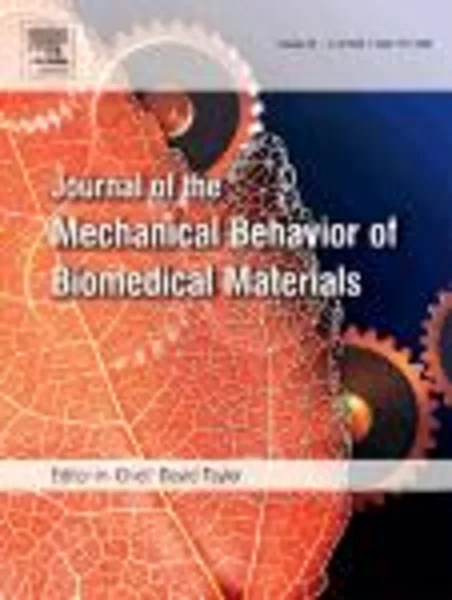-
biomechanics of the stick insect antenna: damping properties and structural correlates of the cuticle
جزئیات بیشتر مقاله- تاریخ ارائه: 1394/01/01
- تاریخ انتشار در تی پی بین: 1394/01/01
- تعداد بازدید: 683
- تعداد پرسش و پاسخ ها: 0
- شماره تماس دبیرخانه رویداد: -
the antenna of the indian stick insect carausius morosus is a highly specialized near-range sensory probe used to actively sample tactile cues about location, distance or shape of external objects in real time. the length of the antenna’s flagellum is 100 times the diameter at the base, making it a very delicate and slender structure. like the rest of the insect body, it is covered by a protective exoskeletal cuticle, making it stiff enough to allow controlled, active, exploratory movements and hard enough to resist damage and wear. at the same time, it is highly flexible in response to contact forces, and returns rapidly to its straight posture without oscillations upon release of contact force. which mechanical adaptations allow stick insects to unfold the remarkable combination of maintaining a sufficiently invariant shape between contacts and being sufficiently compliant during contact? what role does the cuticle play? our results show that, based on morphological differences, the flagellum can be divided into three zones, consisting of a tapered cone of stiff exocuticle lined by an inner wedge of compliant endocuticle. this inner wedge is thick at the antenna’s base and thin at its distal half. the decay time constant after deflection, a measure that indicates strength of damping, is much longer at the base (τ > 25 ms) than in the distal half (τ < 18 ms) of the flagellum. upon experimental desiccation, reducing mass and compliance of the endocuticle, the flagellum becomes under-damped. analysing the frequency components indicates that the flagellum can be abstracted with the model of a double pendulum with springs and dampers in both joints. we conclude that in the stick-insect antenna the cuticle properties described are structural correlates of damping, allowing for a straight posture in the instant of a new contact event, combined with a maximum of flexibility.
مقالات جدیدترین رویدادها
-
استفاده از تحلیل اهمیت-عملکرد در ارائه الگوی مدیریت خلاقیت سازمانی و ارائه راهکار جهت بهبود
-
بررسی تاثیر ارزش وجوه نقد مازاد بر ساختار سرمایه شرکت های پذیرفته شده در بورس اوراق بهادار تهران
-
بررسی تأثیر سطح افشای ریسک بر قرارداد بدهی شرکت های پذیرفته شده در بورس اوراق بهادار تهران
-
بررسی تأثیر رتبه بندی اعتباری مبتنی بر مدل امتیاز بازار نوظهور بر نقد شوندگی سهام با تأکید بر خصوصی سازی شرکت ها
-
تأثیر آمیخته بازاریابی پوشاک ایرانی بر تصویر ذهنی مشتری پوشاک ایرانی (هاکوپیان)
-
مبانی مدل سازی پدیده های ژئوتکنیکی با دستگاه سانتریفوژ
-
تعیین مدول برشی دینامیک حداکثر(gmax) خاک های ایران بر اساس همبستگی بین سرعت موج برشی(vs) و نتایج آزمایش نفوذ استاندارد(nspt)
-
میلی مشهدی، ستایشگر دین و دولت
-
a finite volume method for solving navier–stokes problems
-
stochastic jump and bifurcation of duffing oscillator with fractional derivative damping under combined harmonic and white noise excitations
مقالات جدیدترین ژورنال ها
-
مدیریت و بررسی افسردگی دانش آموزان دختر مقطع متوسطه دوم در دروان کرونا در شهرستان دزفول
-
مدیریت و بررسی خرد سیاسی در اندیشه ی فردوسی در ادب ایران
-
واکاوی و مدیریت توصیفی قلمدان(جاکلیدی)ضریح در موزه آستان قدس رضوی
-
بررسی تاثیر خلاقیت، دانش و انگیزه کارکنان بر پیشنهادات نوآورانه کارکنان ( مورد مطالعه: هتل های 3 و 4 ستاره استان کرمان)
-
بررسی تاثیر کیفیت سیستم های اطلاعاتی بر تصمیم گیری موفق در شرکتهای تولیدی استان اصفهان (مورد مطالعه: مدیران شرکتهای تولیدی استان اصفهان)
-
ارزیابی بهینه سازی تولید انرژی با اجرای تکنیک جاروب کشی ثقلی پلکانی بیوگاز با آب در نیروگاه زیست توده سازمان پسماند شهرداری مشهد
-
بررسی رابطه اخلاق در حسابداری و اجرای مسئولیت های اجتماعی در شرکت های پذیرفته شده در بورس اوراق بهادار تهران
-
تاثیر انگیزش شغلی معلمان در میزان بی انضباطی دانش آموزان
-
ارزشگذاری اقتصادی تفرجگاه ها با استفاده از روش کلاوسون: (مطالعه موردی: شهرستان ایذه)
-
بررسی رابطه بین سازوکارهای نظام راهبری شرکتی با عملکرد شرکت با رویکرد ارزیابی متوازن




سوال خود را در مورد این مقاله مطرح نمایید :